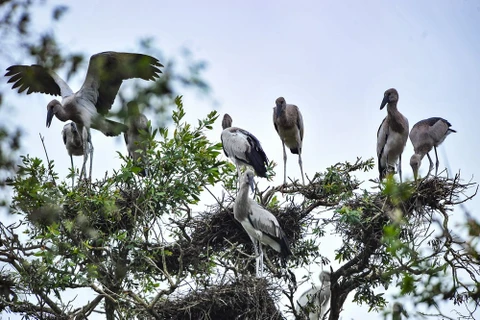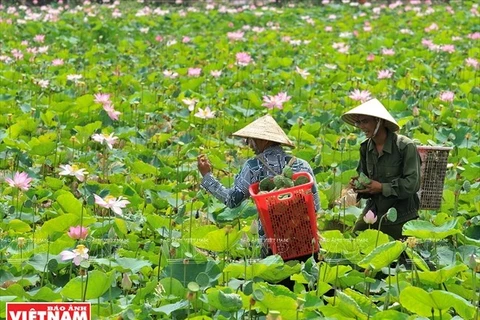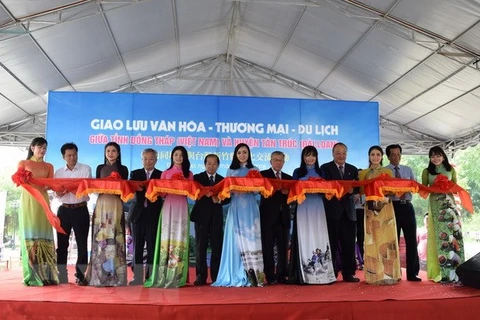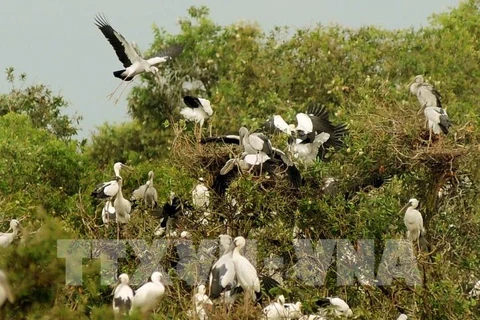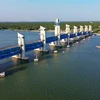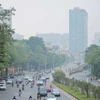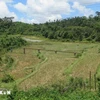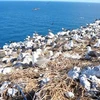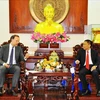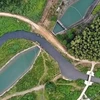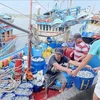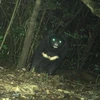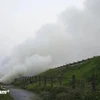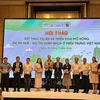HCM City (VNA) - Proper management of water and fires at the Tram Chim National Park in the Mekong Delta province of Dong Thap holds the key to preserving the Ramsar site’s eco-system, experts have said.
The impounding of floodwater nearly year round to prevent fires in the cajeput forests there has upset the eco-system, resulting in a decline in the number of sarus cranes there in recent years, they said.
Speaking at a recent seminar held in Dong Thap on preserving Tram Chim’s bio-diversity, Dr Duong Van Ni of the Can Tho University said priority should be given to preserving grasslands before cajeput forests.
This practice of floodwater impounding round the year might help prevent forest fires but degrades grassland communities, he said.
When there is waterlogging almost all year, foreign invasive species like golden snail, suckermouth catfish and water hyacinth develop rapidly while co nang (Eleocharis) grasslands shrink and the number of precious sarus cranes plunges, he pointed out.
For the park’s eco-system, the appropriate climate is a cycle of dry season followed by a flooding season.
Eleocharis grasslands are the favourite habitat of sarus cranes.
Nguyen Duc Tu, co-ordinator of the International Union for Conservation of Nature’s Water and Wetlands Programme, said the number of sarus cranes in the park has fallen sharply from more than 1,000 in 1980 to 11 this year.
Nguyen Huu Thien, an independent expert on the Mekong Delta’s ecology, said Tram Chim officials are trying to protect cajeput forests from fires because they would be punished if forests burn.
But this has caused the park to “suffocate”, he said.
“When a fire occurs, people think everything will die, but this is totally wrong. The world has realised that fires are also a part of the eco-system since it makes the forest vegetation thinner and boosts regeneration.”
Concurring, Nguyen Van Hung, deputy director of the province’s Department of Science and Technology and former director of the park, said: “Prescribed fires are fine. It is necessary to have controlled burning of forests.”
During the burning, fauna can move to nearby forest areas, he said.
After a few days of burning, new grass grows and birds, rodents, snakes, and turtles return in large numbers, he said.
The province People’s Committee should create a mechanism for controlled burning of grass and other vegetation and water management to sustain the park’s eco-system, he said.
Nguyen Van Duong, chairman of the People’s Committee, instructed park officials and other relevant authorities to draft a detailed plan to manage water and fire to sustain the park eco-system.
Nguyen Hoang Minh Hai, head of the park’s science and international co-operation division, said Tram Chim has recovered about 190ha of co nang kim (Eleocharis ochrostachys) and co nang ong (Eleocharis dulcis) plants in recent years.
Officials have released more than 10 rare fish species such as giant barb and black sharkminnow into the park to reproduce, he said.
Tram Chim spreads over an area of 7,313ha in the Dong Thap Muoi (Plain of Reeds) region in Tam Nong district.
It is also well-known as a habitat for other rare birds like the white-winged duck, spotted-billed pelican and lesser adjutant as well as many fish species listed in Vietnam’s Red Book like the clown knifefish, Hampala barb, small scade river carp, giant barb, and black sharkminnow.-VNA
VNA

